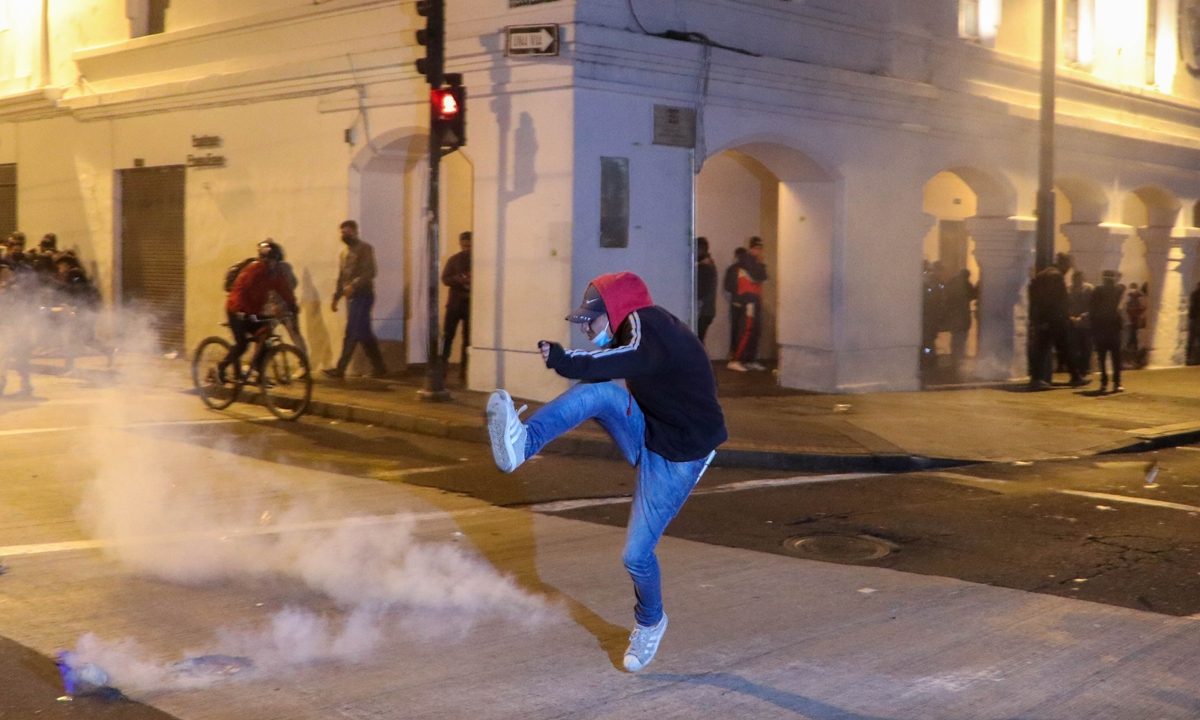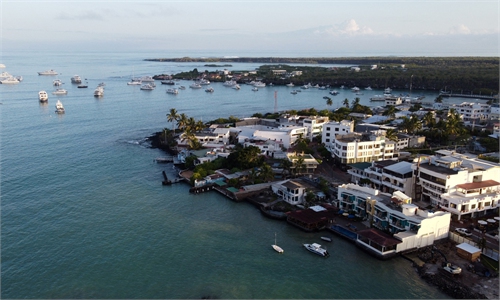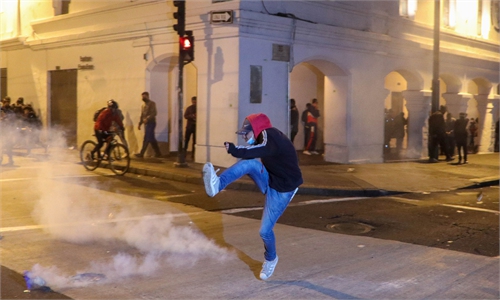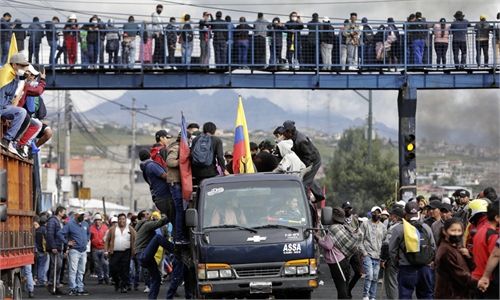
Protestors, from different occupations such as farmers, students, workers, and transporters, gather to join the national strike called by the Confederation of Indigenous Nationalities of Ecuador (CONAIE) against President Guillermo Lasso on the fifth consecutive day in Quito, Ecuador on June 17, 2022.
Thousands flooded the Ecuadoran capital Quito on Wednesday for a tenth day of demonstrations over living costs, in an ever-tenser standoff between the government and Indigenous protesters that has left two people dead.The government rejected protesters' demands to lift a state of emergency in six of the country's 24 provinces and said 18 officers were missing following an attack by protesters on a police station in the Amazonian city of Puyo.
The capital has been semi-paralyzed since Monday, with the arrival of some 10,000 protesters from around the country who have been taking to the streets daily with demands for fuel price cuts and other social aid amid growing economic hardship.
Protesters burned tires and tree branches, while barbed wire and military guards protected the presidential headquarters.
Some 90 civilians and 100 security personnel have been injured, according to rights groups and the government, and about 87 civilians arrested since the countrywide protests started on June 13.
President Guillermo Lasso has proposed dialogue with the powerful Confederation of Indigenous Nationalities of Ecuador (Conaie), which called the protests, in a bid to end the escalating violence.
But Conaie leader Leonidas Iza has said talks were conditional on the state of emergency being repealed and the "demilitarization" of a park in Quito that has been a rallying point for Indigenous people but was taken over by the security forces.
"We cannot lift the state of exception because that would leave the capital defenseless, and we already know what happened in October 2019 and we will not allow that," Minister of Government Francisco Jimenez told the Teleamazonas channel.
AFP



